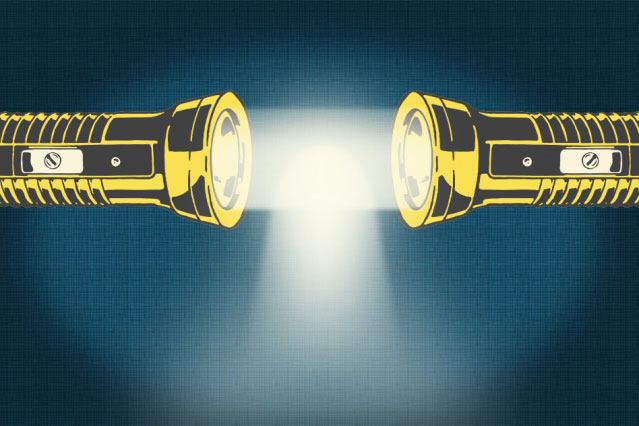 CAMBRIDGE, Mass., Feb. 16, 2018 — Scientists have observed traveling three-photon bound states in a quantum nonlinear medium, a phenomenon that could help further the use of photons in quantum computing.
CAMBRIDGE, Mass., Feb. 16, 2018 — Scientists have observed traveling three-photon bound states in a quantum nonlinear medium, a phenomenon that could help further the use of photons in quantum computing.Researchers from the Massachusetts Institute of Technology (MIT) and Harvard University, in conjunction with scientists from the University of Maryland, Princeton University and the University of Chicago, found that when they excited a cloud of rubidium atoms through a sequence of laser pulses they could induce strong interactions between propagating photons. They tuned the strength of the interaction to make the photons form dimer- and trimer-bound states.
The researchers further found that the bound photons acquired a fraction of an electron’s mass. The newly weighed-down photons traveled about 100,000 times slower than normal, noninteracting photons.
The cloud of rubidium atoms was cooled to just one millionth of a degree above absolute zero, slowing the atoms to a near standstill. Through this cloud of immobilized atoms, the researchers shone a laser beam so weak that only a handful of photons could travel through the cloud at one time.
Researchers measured the photons as they exited through to the other side of the atom cloud. The photons streamed out as pairs and triplets, rather than exiting the cloud at as single photons.
In addition to tracking the number and rate of photons, the team measured the photons’ phase (frequency of oscillation) before and after traveling through the atom cloud. Photon correlation and conditional phase measurements revealed the distinct bunching and phase features associated with three-photon and two-photon bound states.
“The phase tells you how strongly they’re interacting, and the larger the phase, the stronger they are bound together,” said researcher Aditya Venkatramani.
The team observed that when three-photon groups exited the atom cloud, the photon phase was shifted, compared to when the photons did not interact, and was three times larger than the phase shift of two-photon molecules.
Source :- photonics

No comments:
Post a Comment